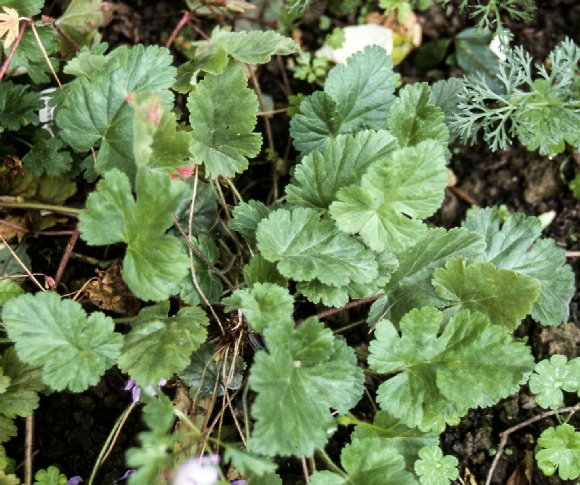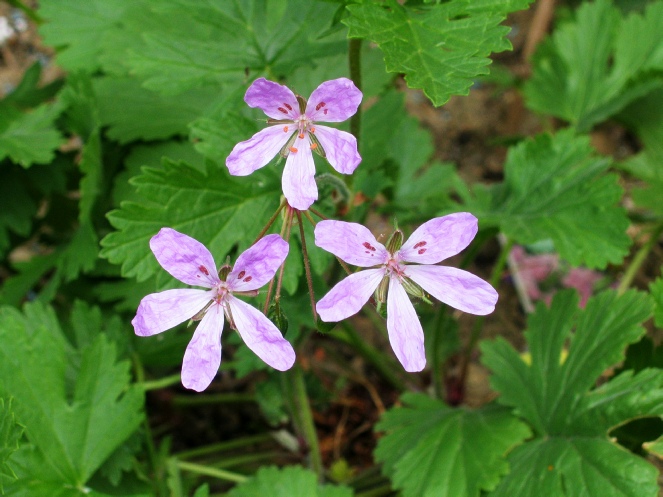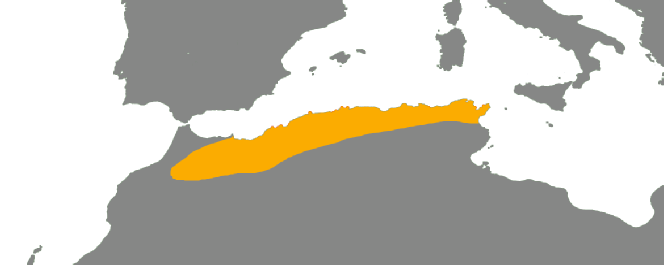Erodium
and California
This site was created and is maintained by Benjamin Coultrup.
Photos all ©Benjamin Coultrup unless otherwise indicated, 1984-
Clade I, Subclade 1
Subgenus Erodium
Clade I, Subclade 2
Subgenus Barbata
Clade II, Subclade 3
Clade II, Subclade 4
-
-
Erodium munbyanum Boiss.
Perennial herb; plants hispid, little or not glandular stems to 20cm, about 8mm thick; roots not tuberous.
Leaves: basal leaves entire, glabrous, triangular, round toothed to ± 3 lobed, lamina to 7cm, petioles to 18cm; upper leaves pinnatisect; stipules large, ovate, usually 15 x 6mm, membranous, brown.
Inflorescence: annual flowering stems hairy or glandulose; umbels of 5-
Fruit: Beak 5-


Basal leaves of Erodium munbyanum at Manorfield, Ashford, Kent, UK; 01/07/1998
Erodium munbyanum at Manorfield, Ashford, Kent, UK; 29/05/2005

Distribution of Erodium munbyanum
Distribution: endemic to Morocco, Algeria, Tunisia in coastal sand dunes.
Notes: makes fertile hybrids with E. nervulosum